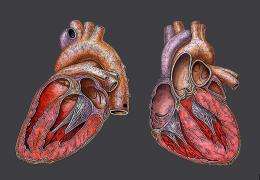Scientists uncover key clue for protecting hearts against deadly arrhythmia

A study, funded by the British Heart Foundation (BHF) and Medical Research Council, has shed new light on how carbon monoxide could be used to protect against life-threatening arrhythmias after a heart attack.
Restoring blood flow to the heart following a heart attack can leave patients with ventricular fibrillation, a dangerous heart rhythm which puts people at greater risk of sudden cardiac death.
Previous research has shown carbon monoxide, which is produced naturally in heart cells, can guard against ventricular fibrillation, however the mechanism behind why this happens was unknown.
Scientists at Aston University in Birmingham (UK) and Peking University in China have found carbon monoxide works by blocking the channels that carry potassium into heart cells – an essential process required to reset the cells before their next heartbeat.
When someone has an arrhythmia their heart beats more erratically. By blocking the potassium channels researchers were able to slow down the heart rate and counteract the dangerous effects of the abnormal rhythm.
Findings from the research project could be used to explore new life-saving treatments for patients with ventricular fibrillation.
Professor Asif Ahmed, Pro-Vice-Chancellor for Health and Professor of Vascular Biology at Aston University, said: "Our latest research highlights that compounds that deliver low levels of carbon monoxide can block specific ion channels in the heart muscle to allow the muscle time to contract properly and forcefully in a coordinated fashion. This discovery provides a new potential therapeutic target.
"In the future, we hope to explore how this can be of direct benefit to patients but more fundamental mechanistic research is still needed and we look to charities like the BHF for support for the on-going collaboration between Peking University and Aston Medical School. "
Professor Peter Weissberg, Medical Director at the BHF, which helped fund the research, said: "This exciting science explains how the carbon monoxide molecule, which is produced by our heart cells during a heart attack, can protect hearts from potentially fatal disturbances of heart rhythm.
"This opens the way for research to develop drugs that mimic this effect and that could one day protect patients who are at risk of life threatening arrhythmias."It's only through generous public donations that we are able to continue funding research like this which will one day help us win the fight against heart disease."
More information: Carbon monoxide inhibits inward rectifier potassium channels in cardiomyocytes, Shenghui Liang, Quanyi Wang, Weiwei Zhang, Hailin Zhang, Shengjiang Tan, Asif Ahmed & Yuchun Gu, Nature Communications 5, Article number: 4676, DOI: 10.1038/ncomms5676



















